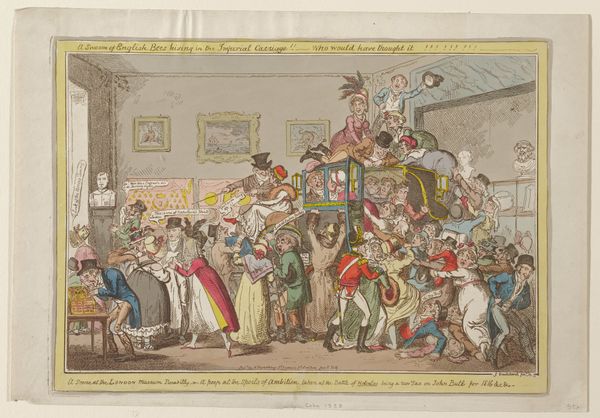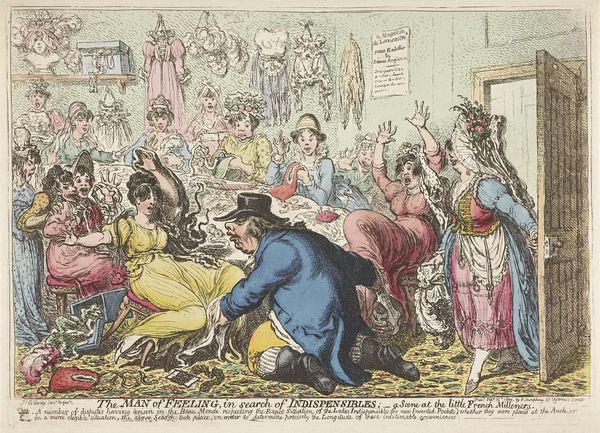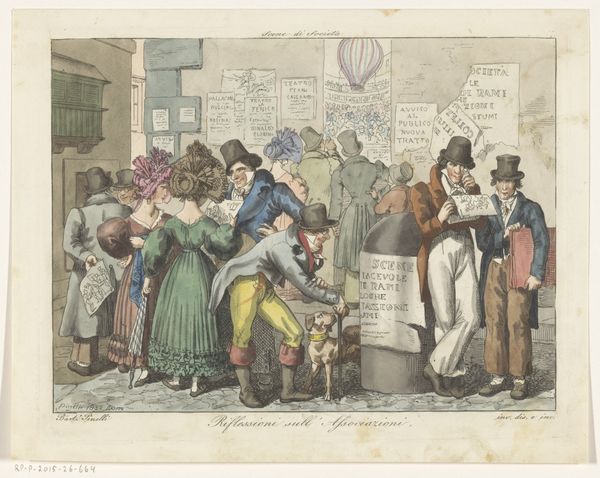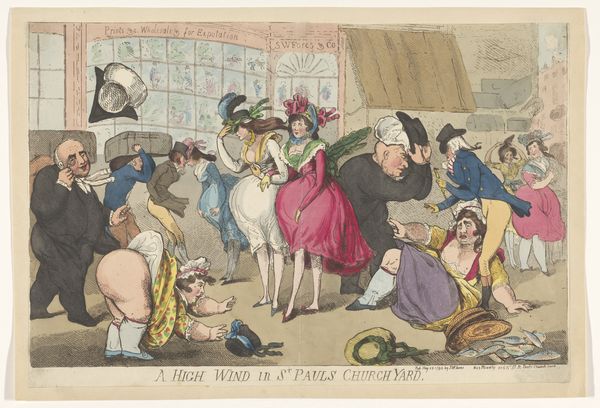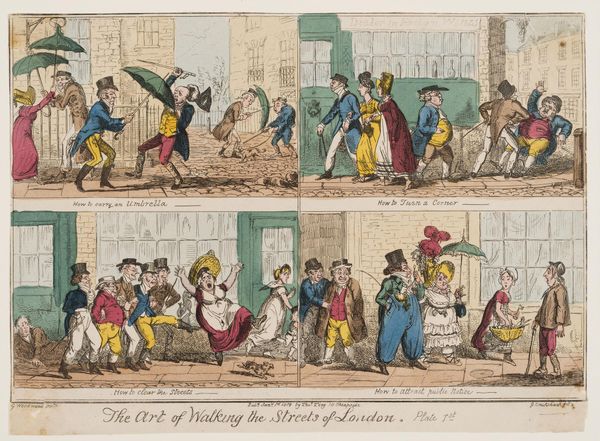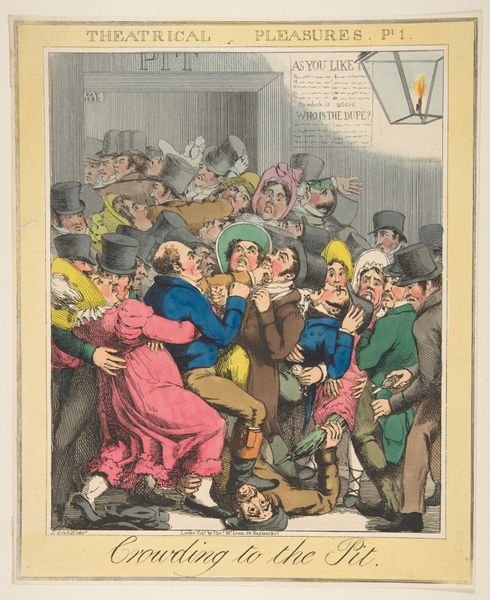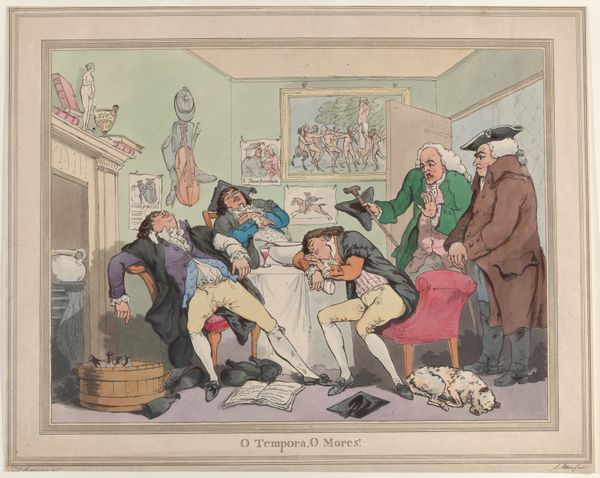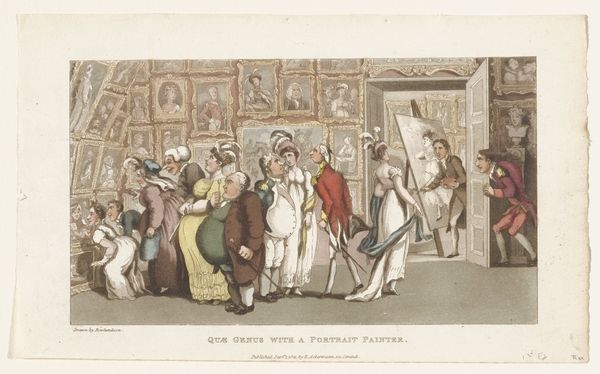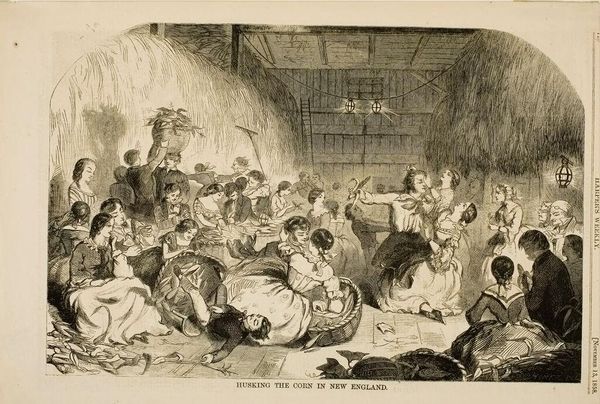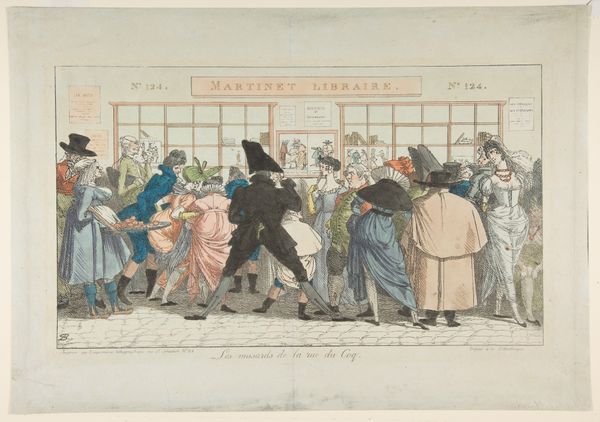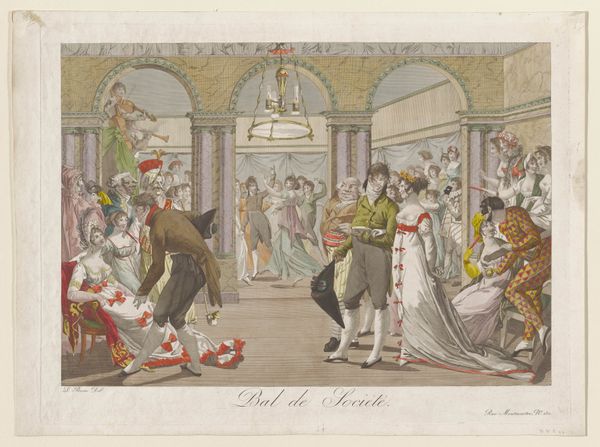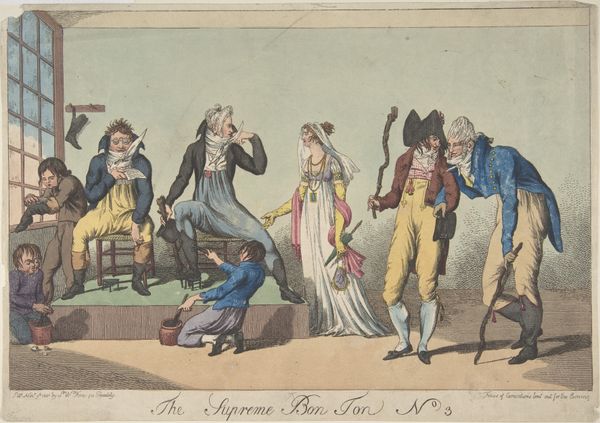
print, etching
# print
#
etching
#
caricature
#
romanticism
#
genre-painting
#
history-painting
Dimensions: height 205 mm, width 255 mm
Copyright: Rijks Museum: Open Domain
Curator: Daniël (I) Veelwaard’s “Mislukte luchtreis van A. Hopman (plaat II), 1804,” made between 1804 and 1805, depicts quite a chaotic scene. The medium here is listed as both print and etching, revealing an intriguing aspect of its production. Editor: My first thought is ‘pandemonium’! There is something riotous and exaggerated about the postures and the expressions on each of these characters. A mood of failure mixed with dark comedy is immediately apparent. Curator: Exactly. As a piece made using printmaking and etching techniques, there is a direct engagement with the printing and distribution processes here. Think of how the message—whatever Veelwaard is trying to convey—reached its intended audience back then. Etchings, as multiples, were meant for consumption. Editor: And the images on the walls—we see what are clearly other prints documenting earlier failed aviation attempts, contributing to the narrative thread. It becomes part of a collective memory. The deflated balloon, the bag marked 'Mis Luck,' all underscore the disastrous theme, and that ringing dinner bell seems almost like a cruel joke. Curator: I would venture that Veelwaard wants us to connect Hopman’s personal, quite public, failure with wider political or economic conditions of the era. The fact that it’s a multiple says something—this isn’t just a personal opinion but speaks to a common experience of some kind. Editor: I can see that. The use of symbols like the deflated air balloon resonate even today: thwarted ambition. Veelwaard's artistic process facilitated social commentary. It shows an era's attempt at advancement ending in humorous defeat. I now see how the figures around the scientist reflect those of the past that share the same story, their expressions forever frozen in time. Curator: So, from the perspective of process and reception, we have an artwork intentionally crafted for social engagement, quite different from some unique masterwork hung in a private collection. The printing method highlights how essential its intended use was: communication. Editor: Precisely. Understanding how cultural iconography meets social critique is vital to appreciating this etching beyond just a moment in history. We appreciate its timeless ability to evoke pathos, or comedic, empathy, rather.
Comments
No comments
Be the first to comment and join the conversation on the ultimate creative platform.
